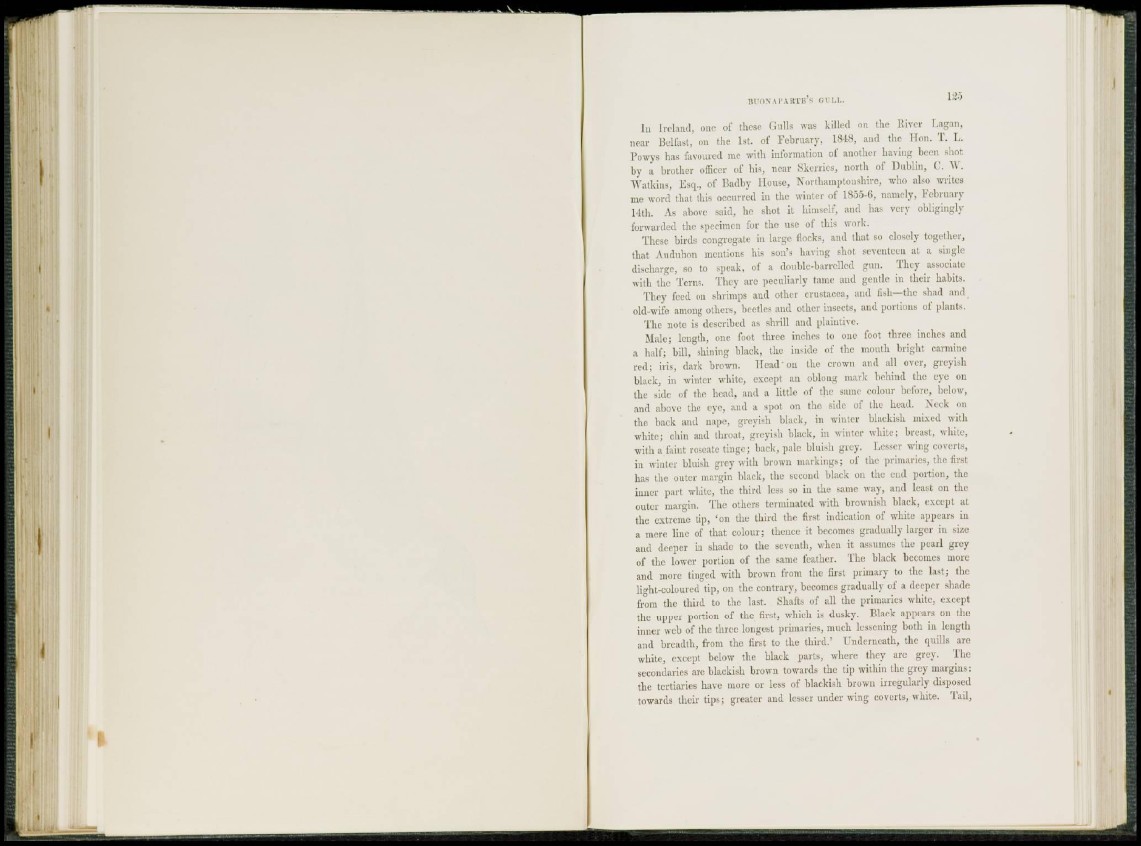
BUON WAKTE's GULL. 125
l u Ireland, one of these Gulls was killed on the River Lagan,
near Belfast, on the 1st. of February, 1848, and the Hon. T. L.
Rowys has favoured me with informal ion of another having been shot
by a brother officer of his, near Skerries, north of Dublin, ('. W.
Wat kins, Esq., of Badby House, Northamptonshire, who also writes
me word that ibis occurred in the winter of 1855-6, namely. February
14th. As above said, he shot it himself, and has very obligingly
forwarded the specimen for the use of this work.
These birds congregate in large flocks, and that so closely together,
that Audubon mentions his son's ha\ lug shot seventeen at a single
discharge, so to speak, of a double-barrelled gun. They associate
with the Terns. They arc peculiarly tame and gentle in their habits.
They feed on shrimps and other Crustacea, and fish—the shad and
old-wife among others, beetles and other insects, and portions of plants.
The note is described as shrill and plaintive.
Male; length, one foot three inches to one foot three inches and
a half; bill, shining black, the inside of the mouth bright carmine
red: iris, dark brown. Head "on the crown and all over, greyish
black, in winter white, except an oblong mark behind the eye on
the side of the head, and a little of the same colour before, below,
and above the eye, and a spot on the side of the head. Neck on
the back and nape, greyish black, in winter blackish mixed with
white; chin and throat, greyish black, in winter white; breast, white,
with a faint roseate tinge; back, pale bluish grey. Lesser wing coverts,
in winter bluish grey with brown markings; of the primaries, the first
has the outer margin black, the second black on the cud portion, the
inner part white, the third less so in the same way, and least on the
outer margin. The others terminated with brownish black, except at
the extreme tip, 'on the third the first indication of white appears in
a mere line of that colour; thence it becomes gradually larger in size
and deeper in shade to the seventh, when it assumes the pearl grey
of the lower portion of the same feather. The black becomes more
and more tinged with brown from the first primary to the last; tin!
light-coloured tip, on the contrary, becomes gradually of a deeper shade
from the third to the last. Shafts of all the primaries white, except
the upper portion of the first, which is dusky. Black appears on the
inner web of the three longest primaries, much lessening both in length
and breadth, from the first to the third.' Underneath, the quills are
white, except below the black parts, where they arc grey. The
secondaries are blackish brown towards the tip within the grey margins:
the tertiaries have more or less of blackish brown irregularly disposed
towards their tips; greater and lesser under wing coverts, white. Tail,